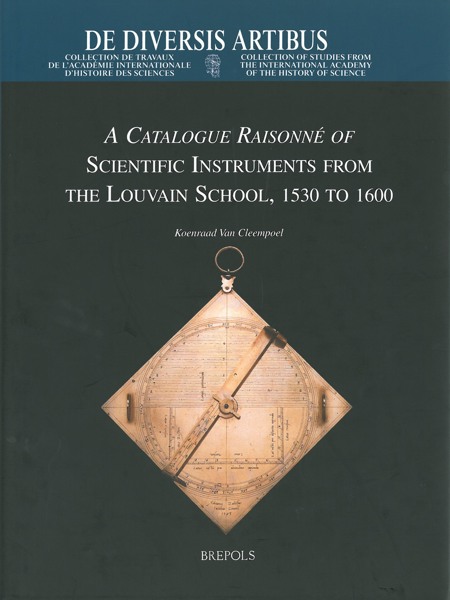
Recherches sur les cadrans solaires
Denis Savoie
- Pages: 243 p.
- Size:200 x 260 mm
- Illustrations:43 b/w, 140 col.
- Language(s):French
- Publication Year:2014
- € 115,00 EXCL. VAT RETAIL PRICE
- ISBN: 978-2-503-55298-9
- Hardback
- Available
Le présent ouvrage analyse en détail le fonctionnement de quelques cadrans solaires remarquables du monde entier, de l’Antiquité jusqu’au début du XXIe siècle.
"The nine chapters of this book cover a wide range of topics from the ancient gnomonic world to the very modern. Each chapter displays a true appreciation for the history that underlies its topic and for the mathematics that makes the relevant dial work. Savoie does a superb job of sharing the history, the mathematics, and the excitement of discovery. The book is an excellent journal of more than a decade of work by a dedicated, insightful expert in the field." (Fred Sawyer, in: The Compendium, Vol. 21, Number 4, December 2014, p. 25)
"Uit dit summiere inhoudsoverzicht blijkt dat dit wetenschappelijk zonnewijzerboek veelzijdig, deskundig, diepgaand, boeiend en vaak ook verrassend is. Bovendien is het fraai geïllustreerd, zowel met foto's als met tekeningen." (Eric Daled, in: Zonnetijdingen, n° 72, 2014, p. 14-15)
"In this handsomely produced, bountifully illustrated and exuberantly mathematical work, the technique of modern gnomonics reveals its debt to a past for which it searches, in these pages, a modern formulation. (...) The studies in this book offer a panorama of the variety of gnomonic practice from Antiquity to the twentieth century in analyses that are fully equal to the complexity of the objects they describe."
Anthony Turner in: Antiquarian Horology, March 2015
“The articles in the book document the great erudition of the author in the realm of sundials. The reviewer has learned very much from the present book and recommends it warmly to any reader who wishes to explore this subject more deeply.” (Gerhard Aulenbacher, in Journal for the History of Astronomy, 47.2, 2016, p. 222)
Les cadrans solaires ont connu plusieurs âges d’or depuis l’Antiquité. Beaucoup ont disparu mais il en subsiste un certain nombre dont l’usage et le fonctionnement font aujourd’hui l’objet de multiples recherches historiques et scientifiques. Cet ouvrage apporte de nouveaux éclairages sur ces instruments qui ne cessent d’étonner par une simplicité apparente, derrière laquelle se cachent des connaissances en astronomie et en mathématiques d’un haut niveau. Qu’ils soient emportés comme « montre » de voyage, qu’ils ornent des palais princiers ou des mosquées, voire qu’on les érige en observatoires, les cadrans solaires n’ont pas seulement eu le rôle d’horloge solaire : ils ont accompagné les progrès de la science tout en contribuant au prestige de leurs possesseurs.
Le présent ouvrage analyse en détail le fonctionnement de quelques cadrans solaires remarquables du monde entier, de l'Antiquité jusqu'au début du XXIe siècle.
Avertissement
Introduction
Chapitre I - L'exactitude des cadrans antiques
Chapitre II - Cadran solaire portable antique "universel" : étude gnomonique
Chapitre III - Les lignes horaires temporaires dans les cadrans solaires antiques (avec la collaboration de Dominique Collin)
Chapitre IV - De l'analemme de Ptolémée aux cadrans solaires arabo-islamiques
Chapitre V - Les représentations astrologiques sur les cadrans solaires
Chapitre VI - Les cadrans solaires à réflexion
Chapitre VII - Les cadrans solaires écliptiques de l'observatoire de Jaipur
Chapitre VIII - La table gnomonique de Saint-Julien (avec la collaboration de Michel Ugon et Paul Gagnaire)
Chapitre IX - Les cadrans solaires à corniche




